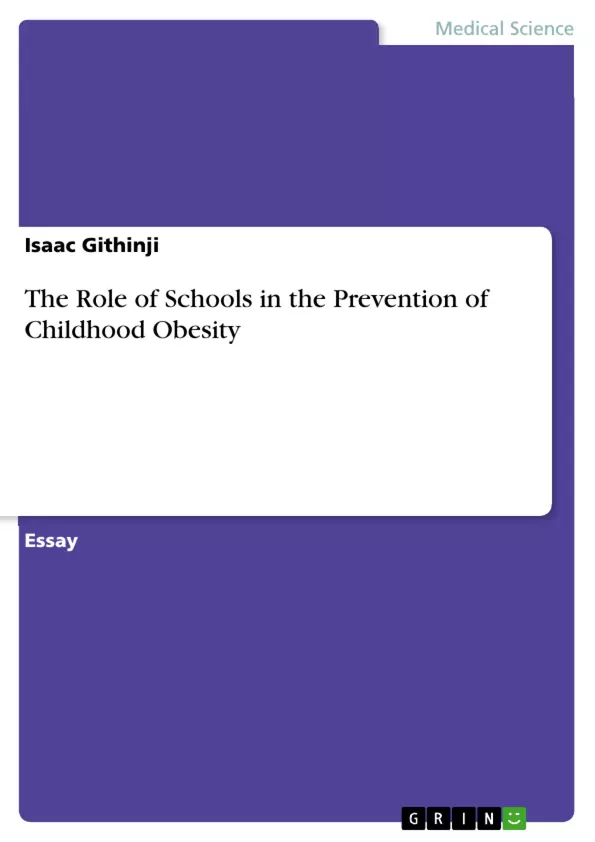Obesity is one of the significant health issues facing American children. Over the past twenty years, childhood obesity has been prevalent due to unhealthy meals both at school and in homes. Notably, children spend most of the time at school and consume about 50% of their daily meals at school through federally-aided meal programs. This means that schools can play a key role to enhance children's health and should be a primary setting to minimize the issue of obesity.
The objective of this paper is to discuss the existing policies or legislation in progress for schools to prevent childhood obesity. The paper will also examine the impact of the policy on the nursing practice, the legislators involved, the role of the APRN, and how it facilitates the best outcomes
Inhaltsverzeichnis (Table of Contents)
- The Role of Schools in the Prevention of Childhood Obesity
- Problem/Population
- Policy
- Description of the Policy
- Legislators Involved in the Policy
- Role of the APRN
- Influence of the Policy on Clinical Practice and Promoting Best Outcomes
- How the Interprofessional Team can use the Policy to Coordinate Care
- Conclusion
Zielsetzung und Themenschwerpunkte (Objectives and Key Themes)
This paper examines the role of schools in preventing childhood obesity by discussing the existing policies or legislation in progress for schools to prevent childhood obesity. It examines the impact of the policy on nursing practice, the legislators involved, the role of the APRN, and how it facilitates the best outcomes.
- Childhood obesity as a significant health issue facing American children
- The role of schools in promoting healthy eating and physical activity
- The impact of the Healthy, Hunger-Free Kids Act of 2010 (HHFKA) on school wellness policies
- The role of the APRN in supporting and advocating for the policy
- The importance of interprofessional collaboration in addressing childhood obesity
Zusammenfassung der Kapitel (Chapter Summaries)
- The Role of Schools in the Prevention of Childhood Obesity: This section introduces the issue of childhood obesity in the United States and highlights the role of schools in addressing this issue. It emphasizes the importance of healthy eating and physical activity in schools and the impact of the federal government’s policies on this issue.
- Problem/Population: This section provides statistics on the prevalence of childhood obesity in the United States and outlines the health risks associated with this condition. It also highlights the significant role that schools play in children's lives, as they spend a significant portion of their day in school and consume a large part of their daily meals there.
- Policy: This section focuses on the Local School Wellness Policy Implementation under the Healthy, Hunger-Free Kids Act of 2010 (HHFKA). It provides a description of the policy, discusses the legislators involved in its development, and explores the role of the APRN in supporting and advocating for this policy.
Schlüsselwörter (Keywords)
This paper focuses on childhood obesity, school wellness policies, the Healthy, Hunger-Free Kids Act of 2010 (HHFKA), advanced practice registered nurses (APRNs), interprofessional collaboration, and the role of schools in promoting health and preventing disease.
- Quote paper
- Isaac Githinji (Author), 2016, The Role of Schools in the Prevention of Childhood Obesity, Munich, GRIN Verlag, https://www.grin.com/document/1167290



